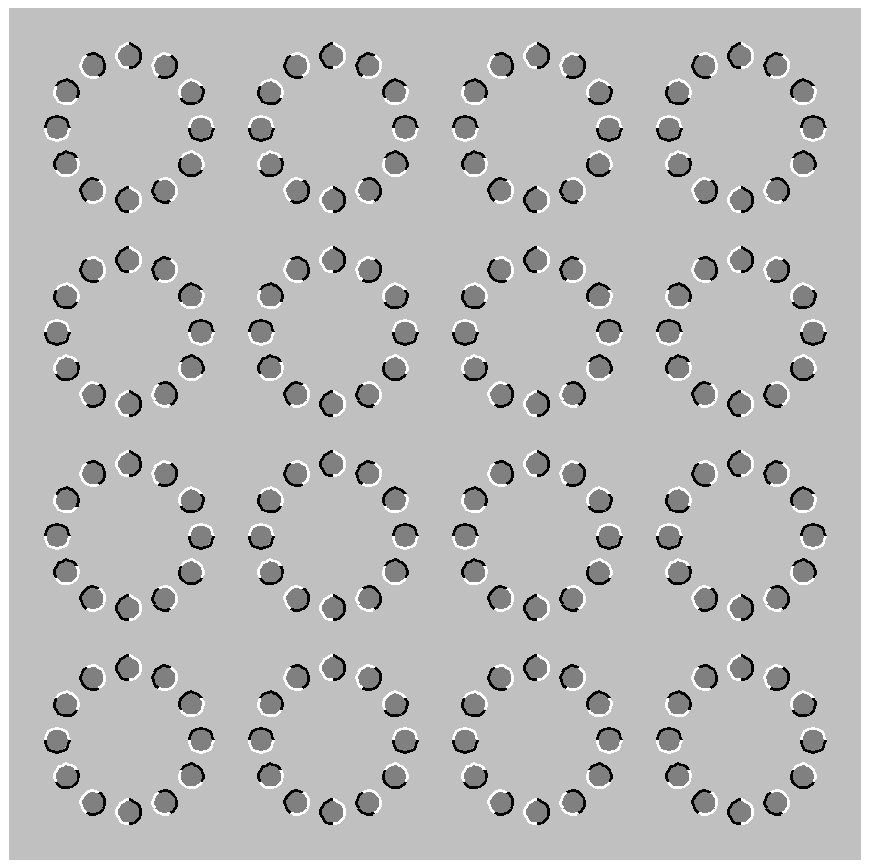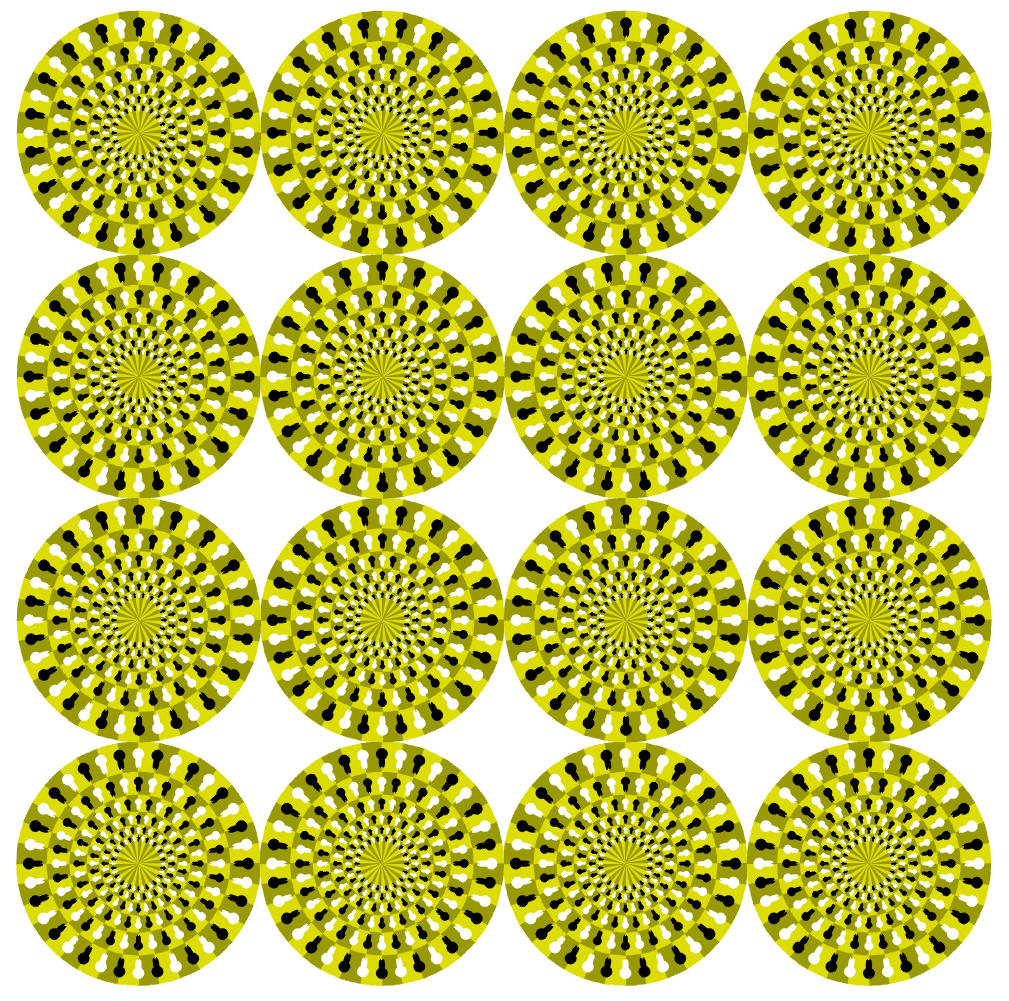
Phenomenal characteristics of the peripheral drift illusion
Akiyoshi Kitaoka and Hiroshi Ashida*
*Kyoto University
Published in the 2003's summer meeting of the Vision Society of Japan (2003/7/21-23) at the Shonan Kokusai-mura Center, Hayama, Kanagawa, Japan (2003)
Abstract. The peripheral drift illusion refers to an anomalous motion illusion that can be observed in peripheral vision (Fraser and Wilcox, 1979; Faubert and Herbert, 1999; Naor-Raz and Sekuler, 2000). Although this illusion has been characterized by gratings that have sawtooth luminance profiles, we demonstrate that the order of four regions of different luminances is critical. The critical order is black-to-dark-gray and white-to-light-gray. Illusory motion appears in the direction from a black region to the adjacent dark-gray region or in the direction from a white region to the adjacent light-gray region. We show that this illusion is strong when inducing patterns obey polar coordinates. These phenomenological findings allowed us to produce a variety of novel instances of the peripheral drift illusion that have much larger illusion magnitudes than ever.
1. It follows the rules shown above.
They indicate directions of illusory motion: black to dark-gray or white to light-gray.
2. It occurs well in peripheral vision.
The object we fixate at appears to be stationary.
3. It occurs well with stimuli of edges.
Stimuli of smooth luminance profiles give weak illusion.
4. It occurs well with fragmented or curved edges.
Stimuli made up of long edges give weak illusion.
5. It may be generated by involuntary eye movements.
Retinal slips do not generate this illusion. Saccade may be necessary.
Some of exhibited works
"Rotation rings" - Rings each made up of 12 balls appear to rotate.

"U-zu-maki (Rabbits' spirals)" - Each circle appears to rotate.
